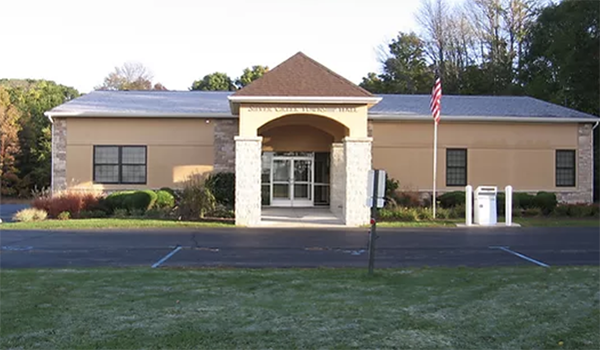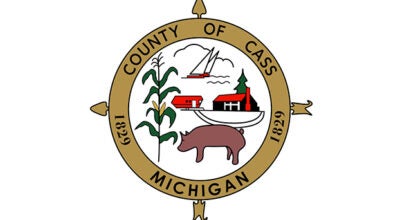City leaders, health department address misleading article, inaccurate COVID-19 case numbers
Published 12:48 pm Tuesday, January 26, 2021

- Niles was claimed to be the city responsible for fastest growth of COVID-19 in Michigan by a web article by 24/7 Wall St. The Berrien County Health Department addressed its concern with articles with similar narrative, saying the data can be used multiple ways, but it does not change objectives of containing virus. (Leader file photo)
|
Getting your Trinity Audio player ready...
|
NILES – Confusion over population numbers and COVID-19 cases bubbled up on social media last week, as an article made claims about Niles and its pandemic trends.
Last week, an article on a website publication “24/7 Wall St.” released an article titled “This is the City in Michigan Where COVID-19 is Growing the Fastest.” The piece named the “Niles metropolitan area” as the area where COVID-19 was growing the fastest in Michigan, but used numbers confusing to those familiar with the area.
Following the piece’s publication, area leaders and health officials spoke out, calling the article misleading and asking residents to be careful where they are getting their COVID-19 data from.
Mayor Nick Shelton took to Facebook to address the piece publicly.
“This article also shows Niles has a population of 154,807 people (We don’t. … We have around 11,000 residents),” Shelton’s Facebook post said. “The area the author refers to is the ‘Niles Metropolitan Area.’ According to the Metropolitan Statistical Area, this area includes South Bend, Mishawaka, Elkhart and Niles combined. It is essentially what we refer to as Michiana. While we have seen an increase in Michigan cases, Indiana has seen an even more substantial uptick.”
The “24/7 Wall St.” piece states the Niles metropolitan area had “an average of 34.6 daily new coronavirus cases per 100,000 residents in the week ending Jan. 19 – the fastest case growth of any city in Michigan. The metro area’s most recent case growth is a decrease from the week prior, when there was an average of 41.7 daily new cases per 100,000 residents.”
The methodology used in the piece ranks new daily cases of COVID-19 per 100,000 residents per area and compares them from the week ending Jan. 12 to the week ending Jan. 19. It also shows cumulative deaths and cumulative cases per 100,000.
The data for Niles appears to reflect the counts for Berrien County’s COVID-19 case trends.
Douglas McIntyre, editor in chief and chief executive of 24/7 Wall St., backed up the piece and its numbers. McIntyre is based in Connecticut.
“’Metropolitan area’ is a term that is used frequently and was created by the federal government,” McIntyre said. “This is why in the introduction and methodology we make certain to identify these as ‘to determine the metropolitan area…’ Niles, the city, would be appropriately identified as Niles City, Michigan under [U.S.] Census definitions.”
In the “24/7 Wall St.” piece, the author stated “Data was aggregated from the county level to the metropolitan area level using boundary definitions from the U.S. Census Bureau. Population data used to adjust case and death totals came from the U.S. Census Bureau’s 2018 American Community Survey and are 5-year estimates.”
McIntyre referenced a link to the U.S. Census Quick Facts website, which shows a population estimate for July 1, 2019, of Niles city, Michigan, as 11,149. The website estimated the population of Berrien County to be 153,401 on the same date. The U.S. Census Bureau’s 2018 American Community Survey estimates Niles city’s population to be 11,265.
Numbers reported by the Berrien County Health Department paint a different picture surrounding Niles’ COVID-19 positivity rate than the one depicted by the 24/7 Wall Street article.
The Berrien County Health Department tracks COVID-19 cases, recoveries and deaths by zip code on its COVID-19 dashboard. The BCHD also monitors outbreaks within schools, workplaces and community settings.
For the 49120 zip code, attributed to the Niles area, the BCHD’s COVID-19 dashboard showed a total of 1,991 confirmed cases of COVID-19 and 141 probable cases for Tuesday, Jan. 26.
Countywide, in the week from Jan. 6 to Jan. 12, the BCHD reported an average of 62.85 new COVID-19 cases per day for the total population of Berrien County. From Jan. 13 to Jan. 19, the BCHD reported an average of 45.85 new cases per day, denoting a falling trend.
In total, confirmed and probable cases of COVID-19 in Berrien County were 10,651 as of Tuesday morning.
The BCHD’s communication manager Gillian Conrad said the article is one of the many ways she has seen data used throughout the COVID-19 pandemic.
“People really need to make sure they’re getting their information from a credible, verified source: The Centers for Disease Control and Prevention, their local health department, the state health department. A website that ends with dot-GOV,” Conrad said.
She also noted the takeaway impact of articles that rank areas as doing better or worse with COVID-19 cases.
“We need to keep reminding ourselves the actions we need people to take have not changed in months,” Conrad said. “Those good public health tools we have at our disposal, we have to keep using them. You can slice and dice data in a thousand different ways. You can come up with different conclusions, depending on which angle you’re trying to take.”
Conrad said data analysis for comparison throughout a state can be used for many different reasons, but encouraged residents concerned by the piece by “24/7 Wall St”. to continue using precautions the BCHD has been recommending, including wearing a face mask, social distancing, washing hands, avoiding large gatherings and isolating in the event of feeling symptoms or being exposed to someone who has tested positive for COVID-19.






